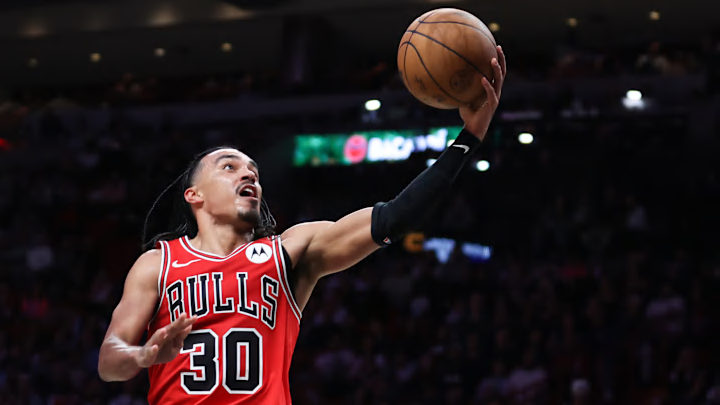Last season, the Chicago Bulls finally offloaded 30-year-old Zach LaVine. After years of trade speculation, the Bulls finally pulled the trigger, sending LaVine to the Sacramento Kings following De'Aaron Fox's trade request.
With Fox routed to his preferred destination—the San Antonio Spurs—LaVine landed in Sacramento as both a cost-cutting move for Chicago and a replacement for the departed Fox. In return, the Bulls netted a trio of role players: Zach Collins and Tre Jones from San Antonio, and Kevin Huerter from Sacramento.
Chicago’s LaVine trade paid dividends
The Bulls also regained control of their 2025 first-round pick in the deal. While the pick wasn’t outright owed to San Antonio, it carried only top-10 protection. Since Chicago finished outside the top 10, the pick would have been conveyed to the Spurs—until the trade brought it back.
Still, the return was underwhelming. Collins, Jones, and Huerter primarily served as salary-matching pieces, and the first-rounder wouldn’t have been essential if the Bulls had chosen to rebuild rather than tread water.
Nonetheless, the trade paid off for the Bulls. Chicago won 17 of its final 31 games after the deadline, with Collins, Jones, and Huerter all making meaningful contributions. Collins appeared in 28 games, starting eight, and averaged 8.6 points, 6.7 rebounds, and 2.1 assists while proving to be a standout defender.
Huerter was arguably the most impactful, appearing in 26 games and making 16 starts. He averaged 13.2 points, 3.3 rebounds, and 3.2 assists while shooting 43.9 percent from the field and 37.6 percent from three. Most importantly, Chicago was 17.5 points better per 100 possessions with the 6-foot-7 wing on the floor.
Among the three midseason additions, Jones appeared in only 18 games after a midfoot sprain cut his season short. Still, he started nine of those games and averaged 11.5 points, 3.2 rebounds, and 4.9 assists, shooting 57.2 percent from the field and 50.0 percent from three. His presence also allowed guard duo Coby White and Josh Giddey to focus more on scoring rather than initiating the offense.
The most intriguing piece: Tre Jones
However, it’s unclear whether Jones’s limited stint foreshadows his performance in 2025-26. He has consistently been a savvy decision-maker and above-average playmaker, but his scoring has declined in recent seasons amid ongoing inconsistencies from beyond the arc.
The former Spur has only reached double figures twice in his five-year career, both seasons coming with over 27 minutes per game. Last season in Chicago, he averaged 25.3 minutes but was far more efficient, resulting in 11.5 points per game.
Unlike Huerter and Collins, Chicago struggled with Jones on the floor despite his strong counting stats. The Bulls were 7.9 points per 100 possessions worse with him, placing him in the 15th percentile. While Jones missed time during Chicago’s best stretch—winning nine of 12 games—his subpar on/off splits remain a concern.
Is Jones an effective player who fails to positively impact his team? That hasn’t been the case for most of his career, which likely explains why the Bulls re-signed him for three seasons. Still, questions remain about how he fits into Chicago’s guard-heavy rotation. The 2025-26 season will allow Jones to prove his worth.
